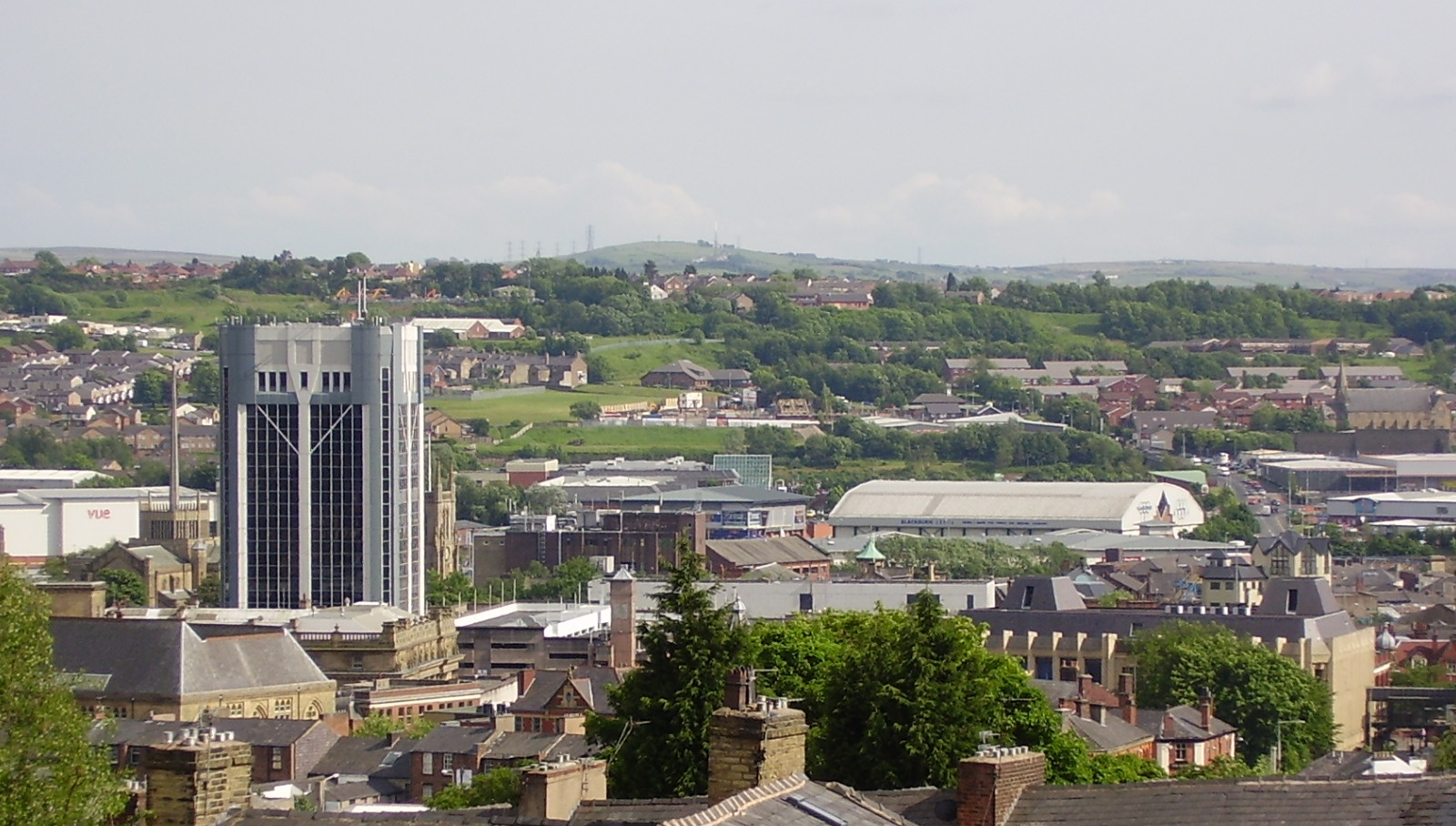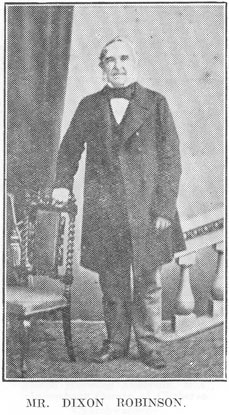|
Chatburn Railway Station
Chatburn railway station once served the small village of Chatburn in Lancashire, England. History The original single line opened in June 1850 and terminated at a platform to the rear of the Pendle Hotel. Some of the first platform stone work is still in situ (as of July 2016). The station west of Clitheroe road was opened in 1872 by the Lancashire and Yorkshire Railway and until 1879, was at the end of the line from Blackburn. There was at one stage a turntable, it was situated east of Clitheroe road on the flat ground in the area of the existing station building. The line was doubled up from 1872 to 1874, and work on the line onwards towards Gisburn and Hellifield began in 1874. Initially it opened to Gisburn in June 1879, and was running to Helifield twelve months later. The bigger replacement station east of Clitheroe Road closed to passengers after ninety years, shortly before the publication of the Beeching Report. Chatburn station had its own goods depot, with mult ... [...More Info...] [...Related Items...] OR: [Wikipedia] [Google] [Baidu] |
Chatburn
Chatburn is a village, civil parish and electoral ward in the Ribble Valley, East Lancashire, England. The population of the civil parish at the 2011 census was 1,102. Situated in a hollow between two ridges north-east of Clitheroe, just off the A59 road, relatively near Pendle Hill south-east of the village. Lanehead quarry is situated to the West at the termination of Chatburn Old Road. Ribble lane at 240 above sea level leads down to the River Ribble North of the village, the top of Downham road being 150 feet higher. The parish adjoins the Ribble Valley parishes of Grindleton, Sawley, Rimington, Downham, Worston, Clitheroe and West Bradford. History The village itself can be dated back to Anglo-Saxon times; it takes its name (as does the lowest Avenue) from one of the most distinguished characters of that time, St Chad, and having a brook (or burn) hence the name. The village sits outside the Forest of Bowland and was never considered part of the ancient Lordshi ... [...More Info...] [...Related Items...] OR: [Wikipedia] [Google] [Baidu] |
Ribble Valley
Ribble Valley is a local government district with borough status within the non-metropolitan county of Lancashire, England. The total population of the non-metropolitan district at the 2011 Census was 57,132. Its council is based in Clitheroe. Other places include Whalley, Longridge and Ribchester. The area is so called due to the River Ribble which flows in its final stages towards its estuary near Preston. The area is popular with tourists who enjoy the area's natural unspoilt beauty, much of which lies within the Forest of Bowland. The district was formed on 1 April 1974 under the Local Government Act 1972, as a merger of the municipal borough of Clitheroe, Longridge urban district, Clitheroe Rural District, part of Blackburn Rural District, part of Burnley Rural District, and part of Preston Rural District, as well as the Bowland Rural District from the West Riding of Yorkshire, hence the addition of the Red Rose of Lancaster and White Rose of York on the coun ... [...More Info...] [...Related Items...] OR: [Wikipedia] [Google] [Baidu] |
Lancashire
Lancashire ( , ; abbreviated Lancs) is the name of a Historic counties of England, historic county, Ceremonial County, ceremonial county, and non-metropolitan county in North West England. The boundaries of these three areas differ significantly. The non-metropolitan county of Lancashire was created by the Local Government Act 1972. It is administered by Lancashire County Council, based in Preston, Lancashire, Preston, and twelve district councils. Although Lancaster, Lancashire, Lancaster is still considered the county town, Preston is the administrative centre of the non-metropolitan county. The ceremonial county has the same boundaries except that it also includes Blackpool and Blackburn with Darwen, which are unitary authorities. The historic county of Lancashire is larger and includes the cities of Manchester and Liverpool as well as the Furness and Cartmel peninsulas, but excludes Bowland area of the West Riding of Yorkshire transferred to the non-metropolitan county ... [...More Info...] [...Related Items...] OR: [Wikipedia] [Google] [Baidu] |
Lancashire And Yorkshire Railway
The Lancashire and Yorkshire Railway (L&YR) was a major British railway company before the 1923 Grouping. It was incorporated in 1847 from an amalgamation of several existing railways. It was the third-largest railway system based in northern England (after the Midland and North Eastern Railways). The intensity of its service was reflected in the 1,650 locomotives it owned – it was by far the most densely-trafficked system in the British Isles with more locomotives per mile than any other company – and that one third of its 738 signal boxes controlled junctions averaging one every . No two adjacent stations were more than apart and its 1,904 passenger services occupied 57 pages in '' Bradshaw'', a number exceeded only by the Great Western Railway, the London and North Western Railway, and the Midland Railway. It was the first mainline railway to introduce electrification of some of its lines, and it also ran steamboat services across the Irish Se ... [...More Info...] [...Related Items...] OR: [Wikipedia] [Google] [Baidu] |
London, Midland And Scottish Railway
The London, Midland and Scottish Railway (LMSIt has been argued that the initials LMSR should be used to be consistent with LNER, GWR and SR. The London, Midland and Scottish Railway's corporate image used LMS, and this is what is generally used in historical circles. The LMS occasionally also used the initials LM&SR. For consistency, this article uses the initials LMS.) was a British railway company. It was formed on 1 January 1923 under the Railways Act of 1921, which required the grouping of over 120 separate railways into four. The companies merged into the LMS included the London and North Western Railway, Midland Railway, the Lancashire and Yorkshire Railway (which had previously merged with the London and North Western Railway on 1 January 1922), several Scottish railway companies (including the Caledonian Railway), and numerous other, smaller ventures. Besides being the world's largest transport organisation, the company was also the largest commercial enter ... [...More Info...] [...Related Items...] OR: [Wikipedia] [Google] [Baidu] |
In Situ
''In situ'' (; often not italicized in English) is a Latin phrase that translates literally to "on site" or "in position." It can mean "locally", "on site", "on the premises", or "in place" to describe where an event takes place and is used in many different contexts. For example, in fields such as physics, geology, chemistry, or biology, ''in situ'' may describe the way a measurement is taken, that is, in the same place the phenomenon is occurring without isolating it from other systems or altering the original conditions of the test. The opposite of ''in situ'' is ''ex situ''. Aerospace In the aerospace industry, equipment on-board aircraft must be tested ''in situ'', or in place, to confirm everything functions properly as a system. Individually, each piece may work but interference from nearby equipment may create unanticipated problems. Special test equipment is available for this ''in situ'' testing. It can also refer to repairs made to the aircraft structure or flight ... [...More Info...] [...Related Items...] OR: [Wikipedia] [Google] [Baidu] |
Blackburn
Blackburn () is an industrial town and the administrative centre of the Blackburn with Darwen borough in Lancashire, England. The town is north of the West Pennine Moors on the southern edge of the Ribble Valley, east of Preston and north-northwest of Manchester. Blackburn is the core centre of the wider unitary authority area along with the town of Darwen. It is one of the largest districts in Lancashire, with commuter links to neighbouring cities of Manchester, Salford, Preston, Lancaster, Liverpool, Bradford and Leeds. At the 2011 census, Blackburn had a population of 117,963, whilst the wider borough of Blackburn with Darwen had a population of 150,030. Blackburn had a population of 117,963 in 2011, with 30.8% being people of ethnic backgrounds other than white British. A former mill town, textiles have been produced in Blackburn since the middle of the 13th century, when wool was woven in people's houses in the domestic system. Flemish weavers who sett ... [...More Info...] [...Related Items...] OR: [Wikipedia] [Google] [Baidu] |
Hellifield Railway Station
Hellifield is a railway station on the Bentham Line, which runs between and via . The station, situated north-west of Leeds, serves the village of Hellifield, Craven in North Yorkshire, England. It is owned by Network Rail and managed by Northern Trains. History The first Hellifield railway station was opened by the "Little" North Western Railway in 1849. It was a modest structure, similar to those at Gargrave and Long Preston and sited to the south of the present one. A much larger replacement (the current station) was built by the Midland Railway to the designs of architect Charles Trubshaw and opened on 1 June 1880, immediately to the north of the junction of the line from and the newly completed Lancashire & Yorkshire Railway route from via . It soon became a busy junction (as it was now located on the Midland Railway's main line from London to Scotland), with trains going to: *Clitheroe * Skipton *Leeds *Blackburn * Settle * Carlisle * Manchester Victoria * More ... [...More Info...] [...Related Items...] OR: [Wikipedia] [Google] [Baidu] |
Beeching Axe
The Beeching cuts (also Beeching Axe) was a plan to increase the efficiency of the nationalised railway system in Great Britain. The plan was outlined in two reports: ''The Reshaping of British Railways'' (1963) and ''The Development of the Major Railway Trunk Routes'' (1965), written by Richard Beeching and published by the British Railways Board. The first report identified 2,363 stations and of railway line for closure, amounting to 55% of stations, 30% of route miles, and 67,700 British Rail positions, with an objective of stemming the large losses being incurred during a period of increasing competition from road transport and reducing the rail subsidies necessary to keep the network running. The second report identified a small number of major routes for significant investment. The 1963 report also recommended some less well-publicised changes, including a switch to the now-standard practice of containerisation for rail freight, and the replacement of some services ... [...More Info...] [...Related Items...] OR: [Wikipedia] [Google] [Baidu] |
Dixon Robinson
Dixon Robinson (1795–1878) was an English lawyer, gentleman steward of the Honour of Clitheroe, and philanthropist in the 19th century. Life Dixon Robinson was born on 17 June 1795 at Chatburn, Lancashire, third son of Josias Robinson (1749–1827) and Susanna Dixon (1758–1824), he studied at Clitheroe Royal Grammar School The Lancashire Lawyer and Steward of the Honor of Clitheroe Having trained and articled as surveyor and land agent at Kirkby Lonsdale, he then adopted the profession of law, eventually becoming a partner in the firm of Carr and Robinson, solicitors, of King Street Blackburn and Clitheroe. Following the death of Mr Carr, Mr Robinson became the senior partner and was appointed by Lord Monague as the 'Gentleman Steward of the Honor of Clitheroe', a position whose residence and office was Clitheroe Castle. This evolved into Robinson and Sons, with Dixon's children Arthur and Henry. The firm's name continued through further generations, the business bein ... [...More Info...] [...Related Items...] OR: [Wikipedia] [Google] [Baidu] |
Clitheroe Railway Station
Clitheroe railway station serves the town of Clitheroe in Lancashire, England. The station is the northern terminus of the Ribble Valley Line / Clitheroe Line operated by Northern Trains and is north of Blackburn. The station forms part of Clitheroe Interchange, which has won a number of awards. History The original station opened on 22 June 1850. It was replaced in 1893–4 by another approximately to the north. The station closed to normal services on 10 September 1962 (that is, before the Beeching cuts) but remained in use for special services until 7 February 1971. The special services resumed on 14 May 1990, and the station was fully reopened on 29 May 1994, when passenger services began again from Blackburn. The line from here continues northwards towards , but this section is normally used only by freight and engineering trains on weekdays; passenger services are limited to a pair of Sundays only ''Dalesrail'' charter trains and occasional railtours. The line also f ... [...More Info...] [...Related Items...] OR: [Wikipedia] [Google] [Baidu] |
Rimington Railway Station
Rimington railway station was a railway station that served the small village of Rimington in Lancashire. It was built by the Lancashire and Yorkshire Railway The Lancashire and Yorkshire Railway (L&YR) was a major British railway company before the 1923 Grouping. It was incorporated in 1847 from an amalgamation of several existing railways. It was the third-largest railway system based in northern .... It was closed in July 1958, some four years prior to the withdrawal of passenger trains over the route. Services References *Lancashire Steam Finale by Michael S. Welch () Disused railway stations in Ribble Valley Former Lancashire and Yorkshire Railway stations Railway stations in Great Britain opened in 1879 Railway stations in Great Britain closed in 1958 {{NorthWestEngland-railstation-stub ... [...More Info...] [...Related Items...] OR: [Wikipedia] [Google] [Baidu] |






